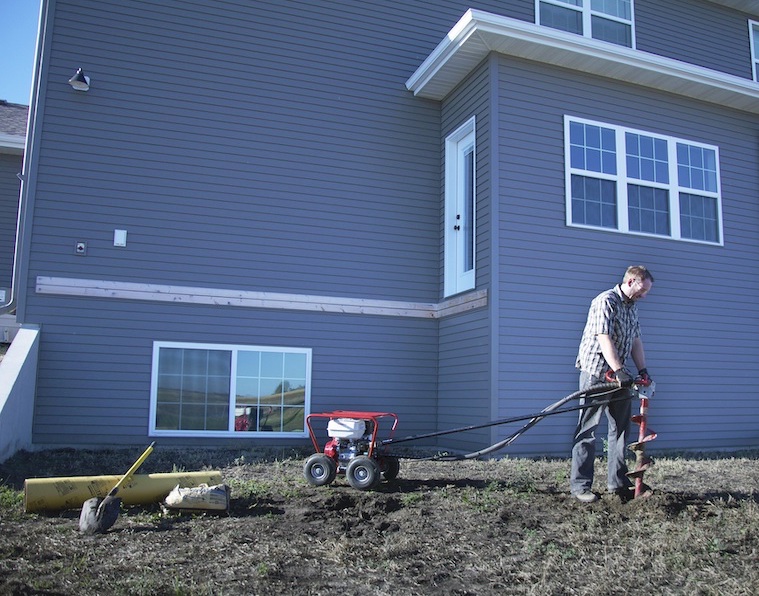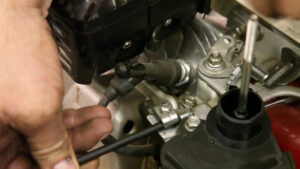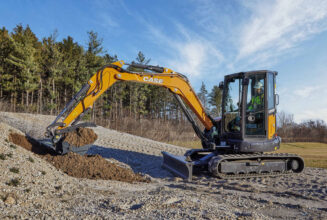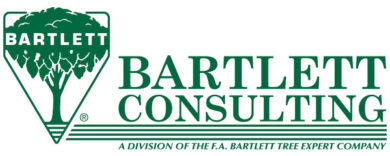Mechanical Earth Drill Maintenance

By Mike Hale
As the end of the busy season wraps up, it’s time to take a closer look at your mechanical earth drill. When it comes to a smooth drilling operation, it’s a matter of a well-operating machine. Yes, choosing a top-performing, reputable drill manufacturer plays a huge role in the success of your drill, but performing routine and end-of-season maintenance is important to prolong the life of your equipment, and ensuring it performs when you really need it.
Routine drill maintenance includes examining, cleaning and lubricating key drill components roughly every 30 days or 40 hours of operation. But what happens at the end of busy season, when your drill makes its way to storage for a few months? There are a few steps you can take to ensure a simple transition from storage to usage in the spring.
Inspect the drill
After every use of your earth drill, take a look at all of the components to ensure everything is in working order. End-of-season maintenance includes taking that inspection one step further. Make sure the blades are past the flighting. When the blades start to wear flush with the auger, it’s time to flip the blades or replace them. If the blades wear to the auger flighting and wear the actual flighting, operators will either need to repair the auger flighting or replace the entire auger.
Take a few more steps to complete the detailed inspection. Ensure all bolts are tight, and make sure all carbide blades (used for hard clay, frozen ground, or hard pan soils) are sharp. If the carbide blades feel worn and rounded, sharpen them with a bench grinder. Using a silicone carbide bench grinding wheel, hold the blade at a 5- to 7-degree relief angle to sharpen it.
The push button connector should be in good shape, with no visible rust. Check the throttle lever for damage or wear. Inspect the throttle cable, too. When you pull the lever, the cable should move freely on the other end. If it sticks, replace it. Some users might be able to remove the cable, clean it and reattach, but if the cable is frayed at all it will be difficult to get back in. Replacing is often the best option.
Inspecting your drill’s flex shaft should be done two or three times a year, but is especially important during end of year maintenance. There shouldn’t be any cracks or wires on the outer housing. If it’s in good shape, simply remove the core, clean it, re-lube it and slide it back in. If the flex shaft shows signs of cracks or wires, it should be replaced.
If any parts are in need of replacement, contact the manufacturer. Addressing replacement parts prior to storage is a better alternative to waiting until spring. Store your drill with peace of mind knowing it’ll be ready to operate in the spring, rather than dealing with potential delays waiting for parts.
Replace fluids and filters
Transmission fluid should be replaced regularly. If your fluid has a lot of metal shavings in it, that can be an indication of excessive gear wear or missing teeth. If the fluid is changed regularly, you won’t experience gear wear. If you hold the output shaft and wiggle it, you shouldn’t feel a lot of movement.
Motor oil and filters should be cleaned and changed. Clean filters with an air hose, or if they’re foam filters they can be shaken out.
Clean and prep for storage
Considering the job, it’s natural that earth drills get dirty. Dirt and clay adhere to the blades of the auger, which can diminish the efficiency and performance of the equipment. Not only should your machine be wiped down after every use, it should also undergo a deep cleaning during end of year maintenance.
Remove all debris from the earth blades using warm, soapy water. Avoid using a power washer, as the pressure can damage the equipment.
To prep for storage, disassemble the drill and remove the torque tube and auger. Drain the fuel or add fuel neutralizer before storage.
Always store the drills upright in a dry place because the steel components will eventually rust if left outside or in places with a lot of moisture, such as propped up outside against a building.
Keep in mind the importance of end-of-year maintenance and the role it plays in overall lifespan of the drill. Cleaning and storing the machine properly contributes to the continued success of your drilling operation.
If you have a maintenance issue or question, be sure to reference online parts and operators’ manuals, online service videos or contact the manufacturer for in-house technical consultation.
Mike Hale is sales and marketing manager at Little Beaver, a manufacturer of quality, safe and productive drilling equipment. For more information visit www.littlebeaver.com.




